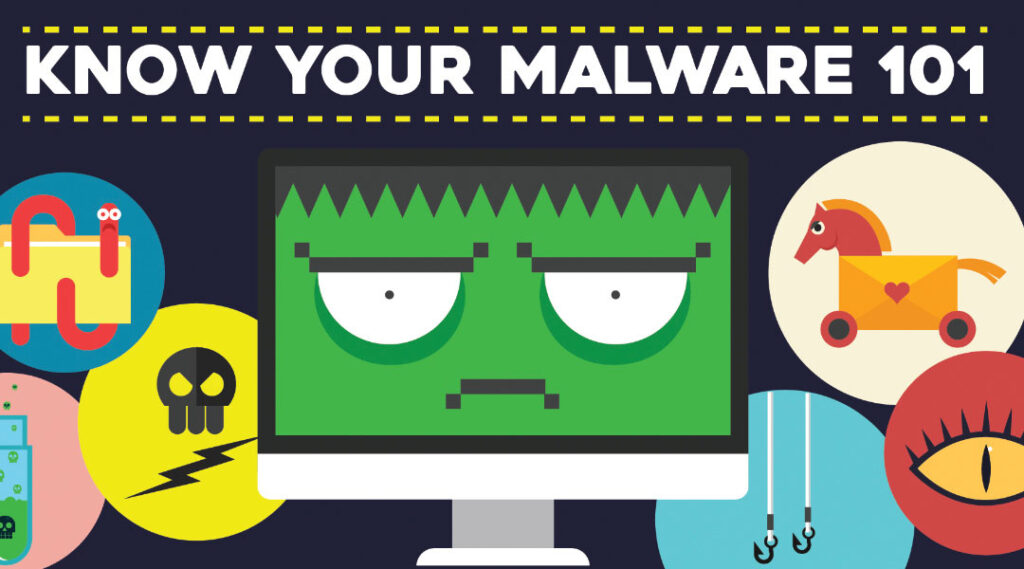Different Types of Malware – Malicious Software

Today almost all our data is stored digitally and hence, since last few years, phishing and malware based cyber-attacks have become a growing problem worldwide. According to the RSA Quarterly Fraud Report for the year 2018, India is one of the top 3 target countries for malicious attacks.
‘Malware’ which stands for ‘Malicious Software’ is used for compromising system functionality in order to steal or delete data by damaging system. In this digital era, our data is literally everywhere which makes it more vulnerable. With some sophisticated ways of malware attacks, an attacker can easily get access to your personal data stored in your device.
Malware is a comprehensive term used for various malicious softwares. Your system can get infected with malware attack even by clicking on a hyperlink or navigating to a webpage or opening any website. Your one wrong click can highly damage your digital identity.
Types of malware
There are various types of malware attacks. Regardless of how they enter your system, even the smallest piece of a malware can exploit your device and compromise your sensitive information, which is valuable for identity thieves. In this article we will see some common types of malware which you should be aware of and how to identify malware attacks.
Virus – Virus is a piece of code which is injected in the targeted device, in an unethical manner in order to damage the system functionality. Virus is a type of malware which can replicate itself and can spread independently in another system. Viruses are spread through emails or attachments. A virus can delete data from your device, steal sensitive information, and harm your system and network.
Trojan horse – A Trojan horse is a piece of malware, which pretends to be something genuine such as an email or an app or a webpage. When user opens such malicious files, it secretly installs the malware which contains malicious codes that steal sensitive data and weaken your device.
Rootkit – It is the hardest of all malwares to detect and hence to remove. Rootkit is created in such a way that it allows other information collecting malwares to gather your sensitive information without your knowledge.
Worm – Worm is a malware program which can replicate itself, like virus, and destroys all the data from your system. Basically, worm makes your drive empty by ‘eating’ system’s operating files and other sensitive data.
Keyloggers – keyloggers are designed to copy or record all the data you type on your system in order to capture your Login Id, passwords and other credentials, without your knowledge. It then forwards your sensitive information to keylogging programs in order to gather information of your device.
Spyware – As the name suggests, spyware keeps an eye on your activities. It monitors your online movements, gathers your personal information and sends it to third-party applications, without your knowledge and consent. Spyware not only gets installed in your system, but it can also download other malicious programs automatically.
How to detect malware attack –
Malware attack can be identified in case of unusual behavior of system, such as,
• System slows down or crashes and corrupts operating files.
• You may receive repeated error message.
• Either system will not start, or it will automatically shut down.
• Inappropriate advertisements may constantly pop-up on your screen.
• Random and unexpected icons may appear in the tool bar.
• You will not be able to uninstall or remove unwanted softwares.
• In case of a laptop or a mobile, battery drains more quickly as compared to regular usage.
• Warning messages from unknown apps may pop up, say, ‘your system is in danger’
